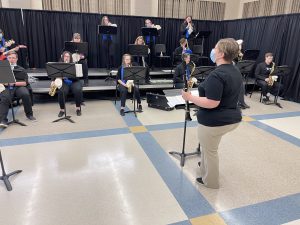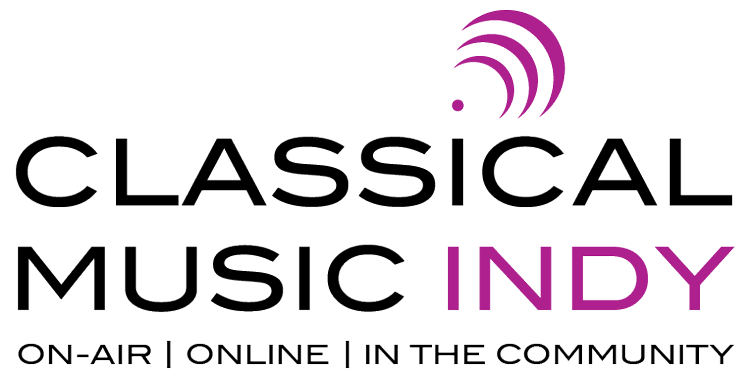Differentiated Instruction in Music Ensembles
Words by Shawn Royer
The idea of differentiating instruction in music ensembles simply means that we are cognizant of and teach towards students with varied learning preferences, experience/ability levels, and physical/mental/emotional/cognitive capabilities. This wide spectrum of diverse learners exists in EVERY music classroom! Every student comes to you with different experiences and at different places in their development, and it is up to you to work with your students to figure out how they learn best to engage them together in the classroom setting.
In some classrooms, the differences between students may be very obvious. For example, consider a band class that has both the beginning fifth grade band students combined with the second-year sixth grade band. In this example, about half of the students are just learning how to assemble their instruments and produce a good tone while the other half of the students can play more than an octave on their instruments and are yearning to play real music. In this scenario, how do you keep the more advanced students interested and motivated while still teaching the less advanced students the fundamentals that they need? This is the exact scenario I was faced with during my first year as a public school teacher.
In other situations, you may be faced with students that have obvious physical impairments, whether temporary or permanent, and you need to make accommodations or modifications to your lessons for those students. Of course, every situation is unique, just as every learner is unique. Some students learn best with visual aids, some learn best by hearing and imitating a model, while some learn best through the physical activity of doing. For most students, however, a combination of all of these approaches will work best.
Engaging different learning preferences
Learning preferences, also commonly referred to as learning styles, just means the different ways that you can engage learners by appealing to their different senses. These learning preferences are typically thought of as being either visual, aural, or tactile/kinesthetic. As someone who supervises pre-service educators in their student-teaching placements, I can attest to the following…
Most young teachers teach as though all students learn best by listening to the teacher talk. However, most students learn better when the teacher engages them through a combination of approaches that appeal to their many senses.
This brings me to a great saying that my friend, Katie Garrett, an elementary school classroom teacher, taught me:
Don’t PEE in your classroom.
In this catchy phrase, PEE is an acronym for “Present, Explain, Expect,” meaning if we just present material by lecturing then we can’t expect students to learn or be able to do that thing. For example, if a director is teaching how to play with good tone, the teacher should not just tell them to or how to play with good tone, then expect them to do it. Instead, present visual aids to show how a strong airstream supports the tone. Then, model a good tone on your instrument and have them imitate you. Have them practice breathing and blowing while feeling the airstream on their hand, then have them play the note several times. I developed the following catchy phrase as a follow up to the previous phrase:
Instead, MACE your students!*
(*DISCLAIMER! This phrase is not encouraging you to use weapons on your students!) This phrase employs another acronym, “Model, Appeal, Contextualize, Engage”. This means to model for your students using your instrument, your voice, or your body. Then appeal to their senses (visual, aural, motor) by drawing a picture, playing a recording, and having them hum/finger/air bow through a passage, for example. Everything you are teaching them out of context can then be contextualized within the repertoire, history, or their lived experiences. Finally, keep them actively engaged by keeping your energy high, keeping them doing stuff, and even incorporating humor when appropriate.

Teaching towards varied experience and ability levels
Most ensemble directors prefer to divide the students into groups based on their similar ability levels. However, many directors do not have this luxury, and even within ensembles that are bounded by ability level, you will still have students in those ensembles that are at different stages of their development. For example, perhaps some of your students in that ensemble struggle with rhythm while others are fine with rhythm but struggle with tuning. I actually prefer to teach ensembles in which the students have a wide variety of experiences and ability levels. For example, every summer I direct the SYO Summer Music Programs full symphony orchestra and jazz ensemble. In both of these ensembles, students range in age from first-year middle-schoolers through college-aged music majors. Talk about a wide variety! Here are some general things that I do to differentiate my instruction for these students.
- Give students options that allow them to work at their own pace within the ensemble– Allow students the option to choose versions of the music/tasks that are easier, average, or advanced. For example, to differentiate for the less advanced students, a director might say, “If you’re not comfortable playing all of the sixteenth-notes yet, just play the downbeats,” or “only play the sixteenth-note groupings on beats 1 and 3, then whenever you’re ready, try adding in beat 2 or 4.” A director can even follow up by saying something like, “If you are planning to play all of the sixteenth-note groupings, hold up a 1. If you’re planning to only play on beats 1 and 3, hold up a 2…” In this example, the director is differentiating instruction by allowing the students to determine what they are ready for and the students are communicating clearly to the teacher where they are at in their own learning processes. Another way to differentiate in this situation would be to offer options for the more advanced students. For example, a director might say, “If you’re getting all of the sixteenth notes, now try to shape the phrase dynamically by following the rise and fall of the line…” or something to that effect.
- Have the more advanced students mentor the less advanced students– This part has been a very necessary and incredibly formative part of our ensemble dynamic every year. In the SYO ensembles, the more advanced students often sit right beside the less advanced students. By empowering the more advanced students to mentor the less-advanced students during and outside of rehearsals, the more advanced students tend to stay engaged and not get bored as easily. They feel a real purpose for sitting next to the younger students, and those less-advanced students often learn more from them than I could possibly teach from the podium. The key here is to teach your student-leaders how to effectively communicate with those younger students without coming off as sarcastic or condescending.
- Allow students to choose their own part assignments – I know that this one will be controversial, but allowing students to choose their own part assignments allows them to take ownership and determine what they are ready for. Most students will make appropriate decisions in these situations, will usually balance out the sections, and will usually rise to whatever standards they’ve self-imposed.
- Break large ensembles into smaller chamber ensembles – You can assign students to these groups, allow students to self-assign, or employ a mixture of both. In any case, the small group settings allow you to clearly hear each student and offer them individualized feedback, similar to a private lesson setting.
- Write out optional easier parts or optional advanced parts – The key with this one is to choose music that is challenging enough to challenge your advanced students, then write out slightly easier watered-down parts for your younger musicians. Writing and creating these simplified parts is also a great task to delegate to your more advanced student leaders.
- Commission a work – If you commission a work from a local composer, you will be in the unique situation to communicate your specific ensemble members’ strengths and areas for growth. With this information in mind, the composer can create a piece that is catered directly to your ensemble. I have commissioned works that include optional easier parts and optional solos for the SYO Orchestra from composers Ryan Fraley and Benjamin Taylor.
- Open up pieces for improvised solos – Of course, this is much easier to do with jazz pieces or with any piece that has an established “groove” over which to play. By allowing room for improvised solos, you are allowing your more advanced and even your developing students some time to shine in the spotlight. This could foster the development of intrinsic motivation and confidence in your students.
Making appropriate accommodations and modifications
If a student is injured, you may need to temporarily make adjustments to their instrument and/or to your lesson to accommodate their needs. For example, if a student that plays the clarinet injures their right thumb and is unable to hold the instrument, you might set the student up with a neckstrap to offer temporary assistance with holding the instrument. While accommodations are an excellent and necessary way to help your individual students, modifying your lesson can often allow for more engagement throughout your classroom and often appeals to more diverse learners than just one student. For example, if you have a student in a wheelchair and you were going to have the whole ensemble stand to play the school fight song, maybe don’t have the ensemble stand. This way, you’re making a change to help one student feel more comfortable and you might actually be helping other students in the process.
Another example of modifying a lesson would be if you had a few less advanced students that just joined your ensemble mid-year. Maybe to help them get all of the notes, you slow the tempo of a piece down in rehearsal. This, in turn, also benefits the students that were able to play all the notes but were playing sloppy and those that were using poor technique. So, when you slow it down, remind the ensemble of what to focus on by saying something like, “If you can already play all of these notes, you should be focusing on your hand position and playing perfectly in tune,” or something to that effect.
Discussion
To summarize, awareness is key. Be aware of your students’ needs and preferences and check in with them frequently. Give your students options that allow them to work at their own pace within the ensemble setting. Remind your learners that are at different stages of their development what they should be focusing on or striving for during each repetition (“if this is difficult for you, just try doing this… if this is easy for you, focus on this…”). Appeal to their varied learning preferences by incorporating visual, aural, and kinesthetic/tactile activities in each lesson. Allow for student leaders to mentor the less advanced students and be sure to make appropriate accommodations and/or modifications to the parts when needed. Finally, if you’re not sure, ask! Ask them how they learn best and what would help them get more out of the learning experience. And don’t forget the most important thing… Don’t PEE in your classroom!
Shawn Royer is an Assistant Professor of Music at Marian University in Indianapolis.
She is also a Yamaha Performing Artist and a Vandoren Artist Clinician.







Leave a Reply